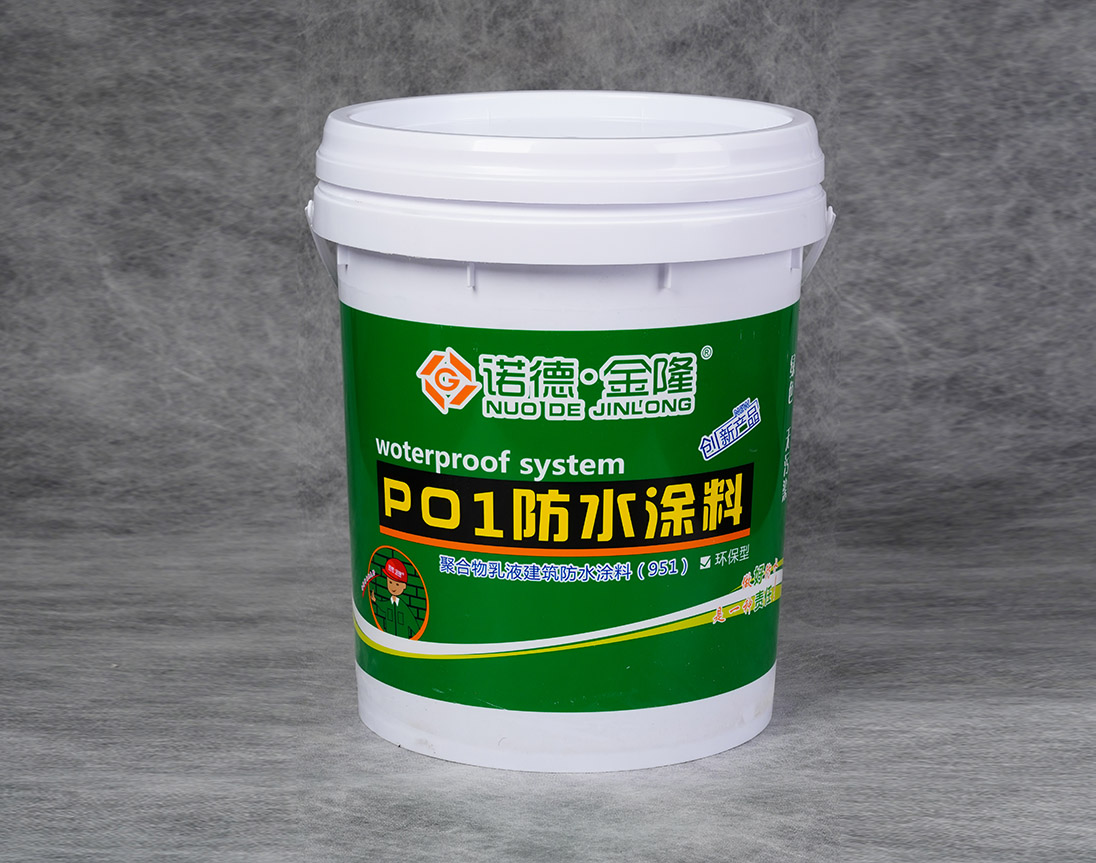

P01 polymer emulsion architectural waterproof coating (951) is a new waterproof material encouraged by the state. It has been widely used in various waterproof and anti-seepage projects because of its excellent performance, simple construction, easy guarantee of waterproof effect and long service life.
P01(951) color elastic waterproof coating is made by using VAE and acrylic acid copolymerized emulsion as base material and modified preparation of special process. It has the characteristics of high elasticity of organic material and good durability of inorganic material, and its comprehensive performance reaches the advanced level of domestic similar products. It’s approved as recommended by China Construction Industry Association.
Material characteristics
1. Waterborne, single-component, adjustable color, non-toxic, odor-free, simple and convenient construction, it is environment-friendly high-polymer waterproof material.
2. An integrated seamless rubber-plastic layer with high elongation and high tensile strength is formed after the film is coated, and the waterproof effect is good.
3. Liquid normal temperature construction has no joints, which is especially superior to the construction site with complex shape and structure and no open fire.
4. High solid content, excellent physical and mechanical properties, good water resistance, weather resistance and durability. It can be used as exposed waterproof.
5. It can be used for waterproofing of bathrooms, sinks, walls and repair works.
6. Excellent aging resistance, stable performance under the action of ultraviolet, heat, light and oxidation, and long service life.
Scope of adaptation
1. Roof: All kinds of new and old flat or steep roofing and gutter cornice are especially suitable for waterproofing and seepage-resistant of irregular shaped parts.
2. Ground building: Waterproof and dampproof finishes for bathrooms, kitchens, sinks and external walls.
3. Underground buildings: Internal and external walls, floor, underground tunnel, elevator room, etc.